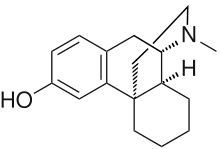dopamimetic
Bluelighter
Might be that I'm an exception on this, but for me there are (at least) two groups of dissociatives. The 'good ones', the arylcyclohexylamines like ketamine, methoxetamine, 2'-oxo-PCE, even 3-MeO-PCP and to some extent memantine. Then that 'dirty ones', DXM/DXO, and diphenidine / methoxphenidine / ephenidine. I've read from others that the latter are different from the ACHs, more crazy etc. and for me they are heavily dysphoric, toxic feeling and a door to insanity while the ACHs are generally clean, bright and positive as long as the dose isn't too high.
I do have really limited chemical knowledge but it appears to me that DXM and the ephenidine etc. are structurally closely related and a bit different from the ACHs. Is this correct?
Could it be that these two groups act on different sub units of the NMDA receptor complex? Or is it about sigma agonism (but 3-MeO-PCP is a sigma agonist too, this might more contribute to its mania-inducing properties)?
I do have really limited chemical knowledge but it appears to me that DXM and the ephenidine etc. are structurally closely related and a bit different from the ACHs. Is this correct?
Could it be that these two groups act on different sub units of the NMDA receptor complex? Or is it about sigma agonism (but 3-MeO-PCP is a sigma agonist too, this might more contribute to its mania-inducing properties)?





